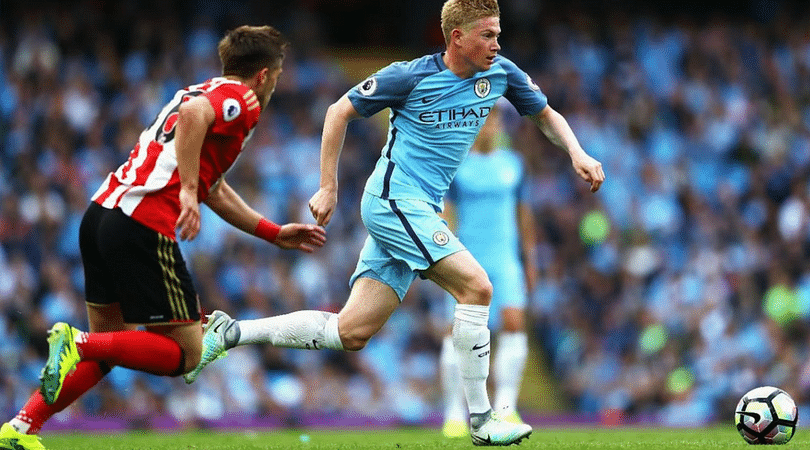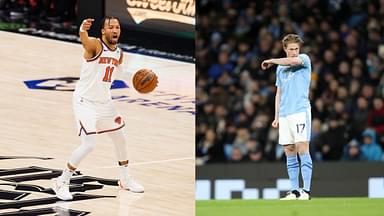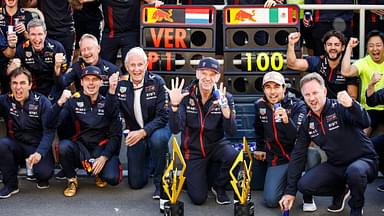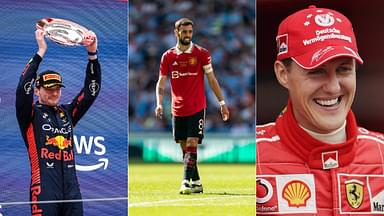If football was music, Kevin de Bruyne would have been the Mozart. He makes you fall in love with him, without any effort. The panache and class that oozes out of the Belgian Midfielder is matched by very few of his time. His status as one of the best playmakers in the world has risen in recent times and one wonders why we couldn’t see his brilliance earlier.
Manchester City’s 4-3-3 sees De Bruyne line up on the right-hand side of the midfield three, but with Fernandinho sitting, full-backs pushing high, and a magical and dynamic shifting front arrangement, Pep Guardiola’s City more closely resemble a more fluid 2-3-2-3 with more than a hint of Marcelo Bielsa.
ALSO READ : Wonderful to see this between Messi and Ronaldo!
Both the central midfielders are expected to cover every inch of grass and to get into positions that are wide as well as in the middle of the park. De Bruyne can often be found drifting into the wide channels to take a pass from his right full back, Kyle Walker, who then receives the ball back and charges forward or takes the return on the overlap.
This allows the full backs to play in the inverted style that Guardiola feels gives more dynamism and a numerical supremacy in the centre of the park, but it only works because De Bruyne’s drifts towards the full-back which creates the space to push into.
TWO BLOCKS OF FIVE
It’s also worth observing that when full-backs push high, especially when Walker does, then De Bruyne will sit back further, effectively covering the central space with Fernandinho and the other full-back. This allows City to create the ‘Two Blocks of Five’ effect with five players forming a defensive unit, and five players pushing ahead of or in line with the ball.
If City break quickly, as they can do from defence with the pace of their front players and the distribution of Ederson and John Stones, they aim to get five players forward. De Bruyne is equally comfortable joining this attack or sitting. While his running style might seem languid he is a deceptively physical player.
QUARTER-BACK
In these breaks, however, De Bruyne will often check his run to provide the breaking players a more central passing option-with his vision and range of passing, he is the ideal person to then quarter-back the rapid attacking options ahead of him.
If City attacks in a more measured way, KDB tends to be slightly deeper than David Silva. Silva is more naturally adept at interchanging and bursting onto return passes, while De Bruyne has increasingly become the more controlling influence from the deep, but with the mobility to get forward as and when required.
THE TRANSITION
In the 2016/17 season, De Bruyne (103) created the second most chances in the Premier League, just behind Tottenham’s Christian Eriksen (112). Of the top 5 teams for chances created, City were third and De Bruyne’s 21.2% of City’s total chances was only just behind Eriksen’s 22.1% for the proportion of chances created by one player for those top 5 teams.
This season De Bruyne and Silva have created the most chances in the league so far, but it is interesting to note that over half of De Bruyne’s chances have come from set-piece situations (14/24). League leading Silva has six assists to De Bruyne’s three, again indicating that the Belgian is the orchestrator from a slightly deeper role, rather than towards the tip of the spear, which is where he played last season, where he recorded 18 assists, more than any other in the Premier League.
As per Pep, De Bruyne is now a more complete midfielder, responsible for defensive, transitional, and attacking phases. His dead ball delivery is hugely important, as is ability to thread passes from deeper or release the quicker, attacking players with short passes.
Indeed, his season-by-season output for Manchester City in the last three Premier League seasons has changed little except for total passes per 90, which has increased significantly and his goal scoring, which has diminished.
|
SEASON | GOALS | ASSISTER PER 90 | KEY PASSES PER 90 | PASSES PER 90 |
|
2017/18 | 0.1 | 0.4 | 2.4 |
74.7 |
| 2016/17 | 0.2 | 0.6 |
2.5 |
56.2 |
| 2015/16 | 0.3 | 0.4 | 2.7 |
50.7 |
This shows an all-rounder rather than an out-and-out creator, someone who has adapted their game to become arguably Manchester City’s most important player without losing their creative ability.
There’s a strong case that this season, Kevin De Bruyne is not just City’s key player, he is the best midfielder in the Premier League.






